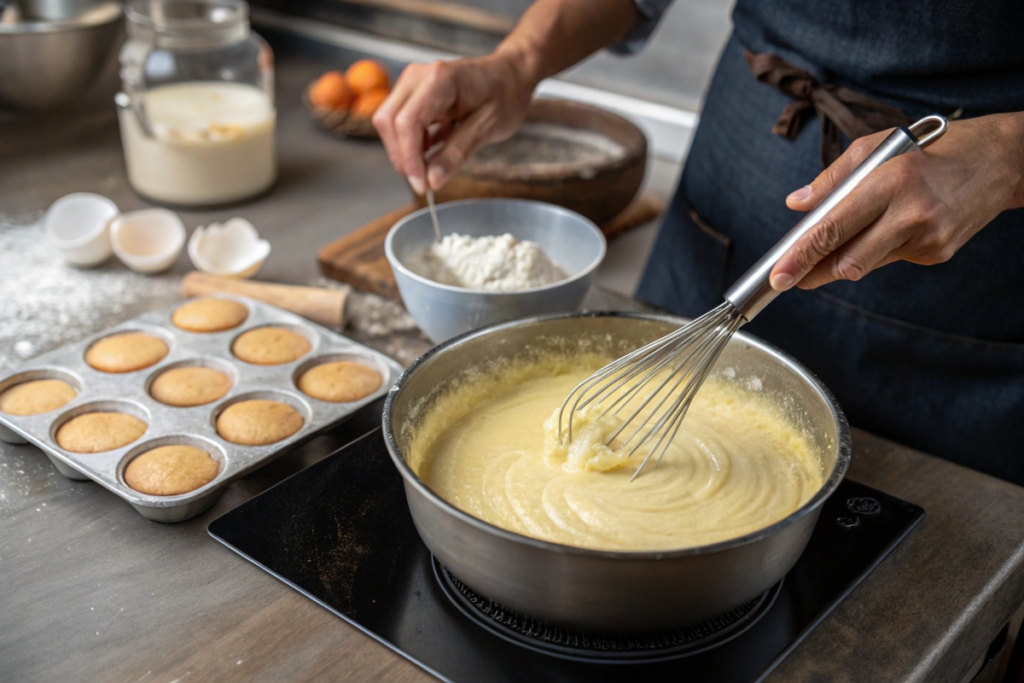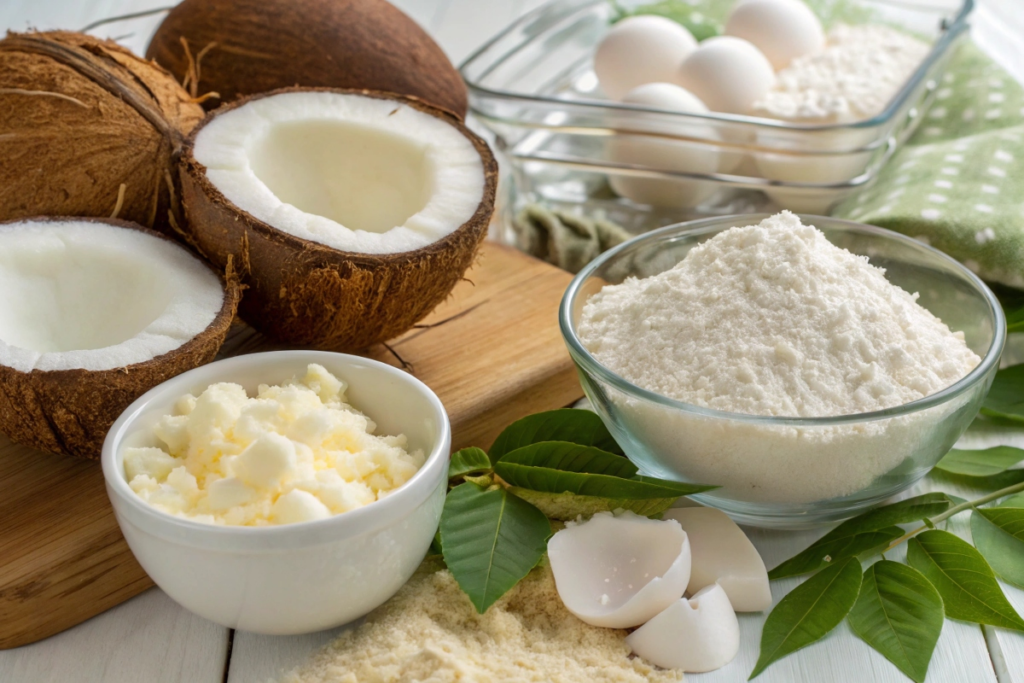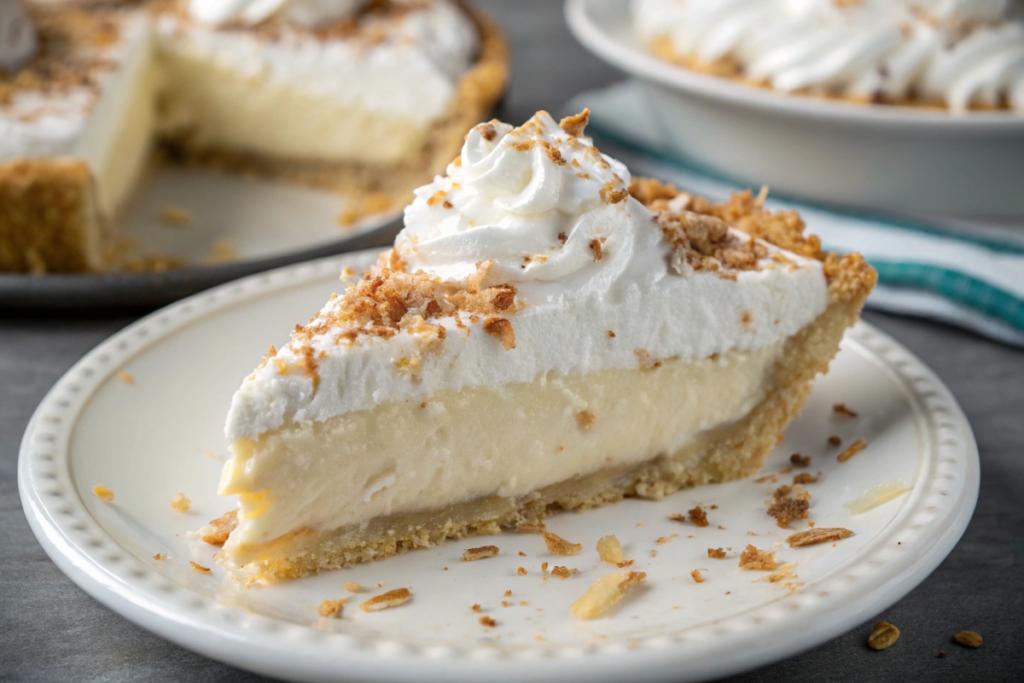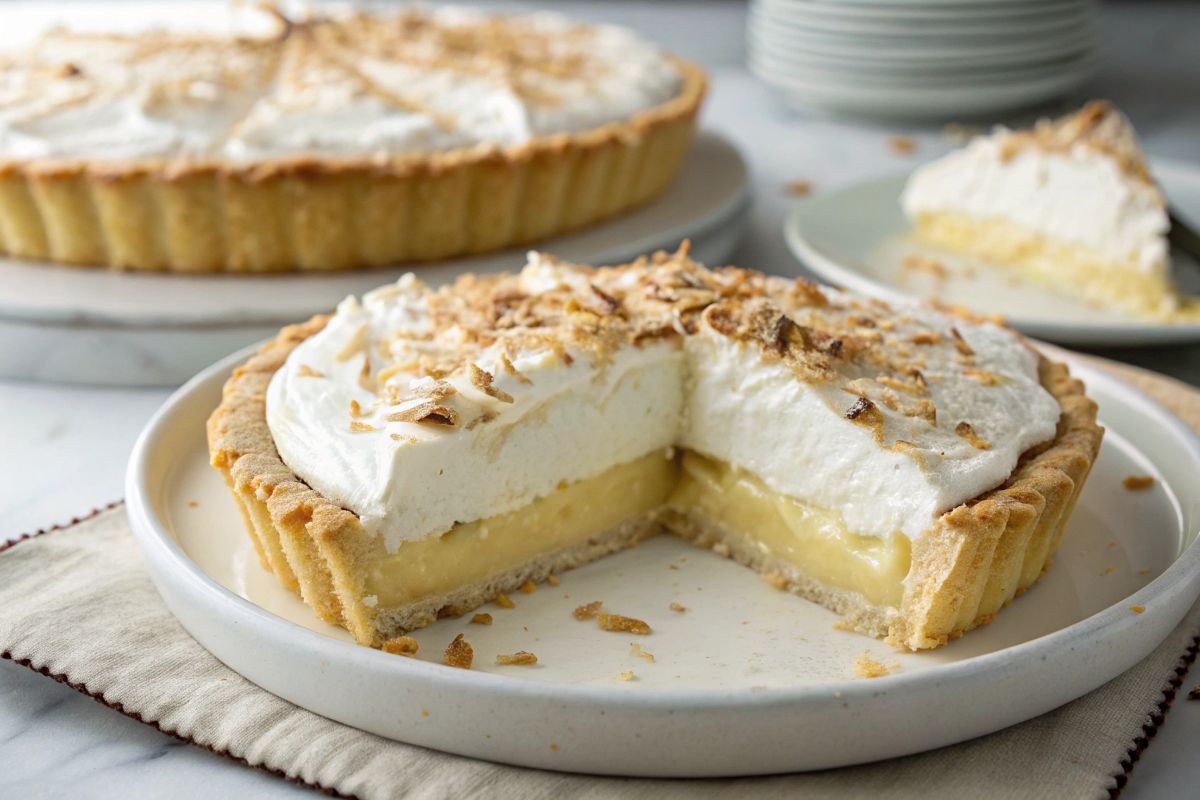Discover crucial solutions and learn why did my coconut cream pie not set up so you can achieve a firm, luscious filling every time.
Table of Contents
Whether you are new to baking pies or an experienced home cook, few things are more frustrating than slicing into a coconut cream pie and discovering a runny, unappetizing mess. Why did my coconut cream pie not set up in the first place, and how can you prevent it from happening again? In this comprehensive guide, you will find detailed explanations, step-by-step solutions, and practical tips for achieving a perfect, sliceable filling every single time. Basically, the trick lies in balancing quality ingredients, correct thickening methods, and precise timing.
Undoubtedly, coconut cream pies are among the most beloved desserts in the United States. They combine the tropical sweetness of coconut with a smooth, creamy custard filling that is both refreshing and indulgent. However, the question why did my coconut cream pie not set up often arises when bakers face a filling that is too loose or watery. In many cases, small mistakes compound into a big disappointment. Consequently, understanding each step in the process will empower you to bake with confidence.
Throughout this article, we will dive into everything from choosing the right type of coconut cream to managing cooking temperature. Furthermore, we will address how over- or under-chilling can sabotage the final result. By the end, you will know exactly what to do, because we have left no stone unturned. Let’s begin.
Common Thickening Agents

Most coconut cream pie recipes rely on some form of starch or protein to thicken the custard. Because the filling must hold its shape, you usually see ingredients like cornstarch, flour, or even egg yolks at play. Chiefly, their role is to trap water molecules and form a gel-like consistency. Here are some popular options:
- Cornstarch: This is the most common thickener for pies. Altogether, cornstarch works swiftly and yields a glossy finish.
- Flour: Flour can also thicken custards, but it often adds a cloudier appearance.
- Egg Yolks: Many recipes rely on egg yolks for richness and a custard-like texture. However, if undercooked, the yolks won’t properly coagulate.
- Gelatin: Some chefs use gelatin for a firmer set, but it can change the mouthfeel considerably.
Comparatively, each thickener behaves differently under heat. When bakers ask themselves, why did my coconut cream pie not set up, the culprit often lies in misusing one or more of these agents. For instance, mixing cornstarch with a hot liquid too quickly can lead to lumps or partial gelatinization. Meanwhile, failing to simmer the custard long enough prevents the starch from fully activating.
Why Did My Coconut Cream Pie Not Set Up? Understanding the Core Issues
Every step, from selecting ingredients to the final chill, affects the firmness of your pie. Nevertheless, many people overlook small but impactful details. Why did my coconut cream pie not set up might be the first question you ask after a disappointing slice. Let’s break down the core issues:
- Insufficient Heating: Specifically, cornstarch and egg yolks need a certain temperature to activate or coagulate.
- Inconsistent Stirring: While constant stirring prevents scorching, you also need to allow the mixture to thicken without diluting it with too much air.
- Lack of Thickener: Adding too little cornstarch or flour can lead to a looser mixture. Conversely, adding too much can cause a gummy texture.
- Poor Recipe Ratios: Some recipes call for more liquid (coconut milk, cream, or whole milk) than the thickener can handle.
- Ingredient Substitutions: Switching regular coconut milk for a light version can yield a runnier outcome.
Equally important is the role of sugar. Excess sugar can prevent proteins from binding effectively, slowing down the thickening process. Indeed, sugar is hygroscopic, meaning it attracts moisture. If a recipe’s sugar content is too high, the filling might stay thinner for a longer time. Another reason might be the type of sweetener you use. For example, liquid sweeteners, such as honey or agave syrup, add even more fluid to the mix and can compromise the set.
Temperature and Cooking Time
Cooking your custard to the right temperature is especially important. Cornstarch activates around 203°F (95°C). Egg yolks begin to thicken near 149°F (65°C). Because your pie filling typically contains both starch and proteins, balancing the temperature can be tricky. Here are some detailed insights:
- Gentle Simmer: Do not rapidly boil your custard. A slow simmer helps starch swell gradually and prevents scorching.
- Monitoring Consistency: Stir often but pause occasionally to see if your mixture coats the back of a spoon.
- Avoiding Overheating: Going above 212°F (100°C) can cause starch molecules to break down, leading to a looser set.
- Frequent Checking: Use a kitchen thermometer for accuracy. Generally, a temperature between 180–190°F ensures a stable thickening.
Furthermore, the duration also matters. If you remove the custard from the heat too early, it may still look thick but can loosen as it cools. Basically, residual heat continues to cook the custard, but only to a point. Consequently, you must confirm the texture in the pot before pouring the filling into your crust.
Why Did My Coconut Cream Pie Not Set Up? Temperature and Cooking Time
Overly runny custards often point to improper cooking conditions. If you are still asking why did my coconut cream pie not set up, consider the following scenarios:
- Undercooking: Your filling never reached the threshold for cornstarch and egg yolks to fully thicken.
- Overcooking: You boiled the mixture so intensely that the starch broke down.
- Inconsistent Heat: Stove burners with uneven heat distribution can cause partial thickening.
- Rushing the Process: Cream pies require patience. Meanwhile, rushing each step can jeopardize the final outcome.
Conversely, if your mixture becomes too stiff or grainy, you might have cooked it too long or too hot. Another factor is the cooking vessel’s thickness. Thin-bottomed pans can scorch custards more easily, which affects the overall consistency. Finally, remember that heat-based thickening continues slightly even after you turn off the stove, so plan accordingly.
Ingredient Quality and Freshness
High-quality coconut products and fresh eggs significantly improve your chances of success. In many situations, home cooks might wonder, why did my coconut cream pie not set up, only to realize they used coconut milk that was watered down or past its prime. Especially when coconut milk has stabilizers or emulsifiers, the behavior under heat might change unpredictably.
- Coconut Milk vs. Coconut Cream: Full-fat coconut cream is thicker, with higher fat content that helps the filling set. Light coconut milk contains more water, which dilutes the thickener.
- Egg Freshness: Fresher eggs have thicker egg whites and stronger yolks. This ensures a more stable custard.
- Check Expiration Dates: Expired dairy or coconut products can cause off-flavors and irregular thickening.
- Choose Unsweetened Coconut Shreds: Sweetened shreds can throw off sugar ratios.
Moreover, certain brands offer more consistent coconut products than others. If you frequently get watery results, switch brands or choose a product labeled “full fat” or “for baking.” Additionally, look for coconut milk with minimal additives.
Why Did My Coconut Cream Pie Not Set Up? Ingredient Quality and Freshness

If you have triple-checked your cooking technique yet still find yourself asking, why did my coconut cream pie not set up, ingredient integrity might be the reason:
- Diluted Products: Some brands add water to reduce costs, making the coconut milk less creamy.
- Old Thickening Agents: Cornstarch or flour that has been sitting around for years may lose potency.
- Spoiled Coconut Milk: This can lead to curdling or incomplete thickening.
Basically, ensure every item in your recipe is top-notch. This includes the crust ingredients and any garnishes. Equally, do not ignore the impact of using the wrong kind of sugar or substituting artificial sweeteners. If your filling remains runny, you might want to reevaluate the entire ingredient list.
Mixing and Layering Techniques
Your mixing approach also influences the final outcome. However, achieving the perfect consistency is more about technique than brute force. Overbeating the custard incorporates air, which can lead to foam or bubbles. Under-mixing, on the other hand, leaves pockets of unincorporated starch, resulting in lumps or uneven thickness.
Consider these tips:
- Gradual Combination: Temper egg yolks by gradually whisking in hot custard before combining all at once.
- Steady Stirring: Stir continuously when cooking on the stove, but avoid whipping.
- Layering Order: Pour the hot custard into the crust immediately, especially if your recipe calls for setting it in the fridge soon after.
- Handling the Topping: If you add whipped cream or meringue on top, wait for the custard to cool a bit. Otherwise, condensation forms beneath the topping and can water down the filling.
Meanwhile, always ensure you incorporate starch fully. A slurry—mixing cornstarch with a small amount of cold liquid—helps prevent lumps. Another approach is to whisk sugar and cornstarch together first, before adding any liquid, to distribute the starch more evenly.
Common Thickening Errors: Why Did My Coconut Cream Pie Not Set Up?
One frequent pitfall is adding cornstarch or flour directly to hot liquid. This causes clumping and partial gelatinization on the spot. Consequently, you won’t achieve a uniform thickness. Another is cooking the custard on too high heat. Specifically, if the bottom scorches, the entire filling can taste burnt, and scorching can also alter the thickener’s performance.
Altogether, if you are repeatedly asking why did my coconut cream pie not set up, examine your mixing and layering steps. A small tweak in technique often makes a huge difference. Thoroughly whisk your thickener in a separate bowl with a portion of cool milk or cream. Then, slowly pour it into the main mixture, ensuring everything blends seamlessly.
Common Setting Problems

Even when the thickening looks correct on the stove, problems can arise during chilling. Particularly, some pies need several hours to firm up. Nonetheless, many bakers get impatient and slice too soon, leading to a messy outcome.
- Under-Chilling: Cream pies often need at least four hours in the refrigerator. Initially, the filling might feel soft but will firm up with enough time.
- Over-Chilling: If you store the pie for too long or in very cold conditions, it might develop condensation that pools on the surface.
- Excess Liquid: If you added too much milk or coconut cream, your pie might never fully set, regardless of chilling time.
Another factor is the crust. A soggy or improperly baked crust can seep moisture into the custard. Therefore, a pre-baked or blind-baked crust typically offers the best defense against runny fillings. Equally important is allowing the crust to cool before pouring in the hot custard. Otherwise, the extra steam from the crust can add moisture.
Over-Chilling vs. Under-Chilling: Why Did My Coconut Cream Pie Not Set Up?
If your pie has been in the refrigerator for a lengthy period but remains runny, you might be dealing with a thickener issue rather than the chill time. Conversely, if you chilled it only for an hour and found it soupy, you simply need more patience. Hence, setting a timer and giving the custard adequate time to rest is vital.
When over-chilled, the surface can crack or weep if you used a meringue topping. This weeping is basically water being expelled from the egg proteins. Consequently, it seeps into the filling. If that happens, it can break down the custard’s structure. Eventually, you will have a watery layer between your pie and topping. Timing is everything when it comes to chilling.
Step-by-Step Solutions to Fix Runny Coconut Cream Pie
It can be discouraging to see your pie remain runny. Nonetheless, all hope is not lost. You can sometimes salvage the situation with a few strategies:
- Re-Cook the Filling: If you haven’t poured it into the crust yet, return it to the stove. Add a cornstarch slurry or egg yolk mixture. Stir gently until thick.
- Add Stabilizers: For an almost-set filling, dissolve a small amount of gelatin in warm water and whisk it in. This can help the pie firm up.
- Create a Layer: If your filling is runny but still tasty, place a layer of whipped cream or cream cheese on top. Specifically, a stable cream cheese layer can mask minor textural flaws.
- Serve Chilled: Keep your runny pie refrigerated until the last moment. The colder the pie, the firmer it appears.
Equally important is learning from the experience. Next time, measure ingredients precisely. Use a thermometer, and do not rush the cooking or chilling stages. Likewise, be mindful of any recipe substitutions. Coconut milk varies a lot by brand, so choose one with consistent results.
Mixing and Layering: Why Did My Coconut Cream Pie Not Set Up?
If you suspect that your mixing approach is the problem, try a more methodical process:
- Combine sugar and cornstarch in a bowl.
- Gradually whisk in a small amount of cold coconut milk to form a paste.
- Pour the rest of the coconut milk into your saucepan and heat slowly.
- Once warm, add the cornstarch paste, stirring continuously.
- Temper egg yolks separately if the recipe calls for them.
- Cook the mixture until it visibly thickens and can coat the back of a spoon.
- Pour it into a cooled crust immediately.
This ensures the starch dissolves properly and the temperature climbs steadily. Because lumps and partial cooking are prime causes of runny pies, thorough but gentle mixing is key.
How to Avoid Runny Fillings Altogether
Prevention is often simpler than rescue. Therefore, it is best to adopt good practices from the start:
- Choose a High-Fat Coconut Milk: Look for “full fat” on the label. Avoid “lite” versions.
- Use Enough Thickener: Follow the recipe accurately. If you want a firmer set, add a bit more cornstarch or flour.
- Cook to the Right Temperature: Monitor with a thermometer to ensure the custard hits at least 180–190°F.
- Cool the Crust: Allow your crust to cool fully before filling.
- Allow Adequate Chilling Time: Let the pie rest in the fridge for at least four hours, or overnight if possible.
Furthermore, some bakers add a tablespoon of butter at the end for extra richness. This step, however, is optional. Eventually, you will find a combination of ingredients and techniques that work perfectly for your kitchen setup.
Additional Tips for Perfection
Even small details can make a big impact. Initially, you might not consider the sugar type or the humidity in your kitchen. However, these factors influence the final result. Below are additional tips:
- Test Consistency on a Spoon: Lift a spoonful of custard. If it drips off immediately, keep cooking. If it clings, you are on the right track.
- Avoid Lumps: Sift your flour or cornstarch. Because lumps can remain hidden until it is too late, sifting prevents this issue.
- Use Quality Eggs: Free-range or organic eggs often have a richer yolk. Richer yolks can enhance setting.
- Stabilize Whipped Cream: If you top your pie with whipped cream, consider adding a pinch of cream of tartar or instant pudding mix to prevent weeping.
Likewise, do not overlook the role of thorough documentation. Keep notes on your recipe tweaks, brand choices, and cooking temperatures. Eventually, you will refine a foolproof method that yields the perfect coconut cream pie every time.
Conclusion
Whether your coconut cream pie collapsed entirely or just needed more time in the fridge, knowing why did my coconut cream pie not set up is the first step toward improvement. Chiefly, the common pitfalls revolve around thickening agents, cooking temperature, ingredient quality, and chilling. Because each of these elements can derail your plans, attention to detail is paramount.
Nonetheless, do not be discouraged if your custard occasionally turns out loose. You now have the knowledge and tools to fix runny fillings and prevent future disappointments. Eventually, your coconut cream pies will impress guests with their velvety texture and spot-on consistency. Altogether, you have everything you need to enjoy the perfect slice—firm, creamy, and undeniably delicious.
Frequently Asked Questions
Why did my coconut pie not set up?
Your coconut pie may not have set up because the filling was not cooked long enough, the thickener was not activated, or you used ingredients with too much water content. Additionally, under-chilling and using poor-quality coconut milk can contribute to a runny filling.
Why did my coconut cream pie runny?
A runny coconut cream pie typically occurs when the custard is undercooked or contains an insufficient amount of thickener. Equally, improper chilling time and ingredient quality play a big role. Ensure you cook the custard thoroughly and allow ample time in the refrigerator to set.
How do you fix runny coconut cream?
To fix runny coconut cream, reheat it gently and add a slurry of cornstarch or flour mixed with cool liquid. Meanwhile, whisk continuously until it thickens. Afterward, cool and refrigerate. If it still refuses to set, a small amount of dissolved gelatin can offer additional firmness.
Why is my cream pie not setting?
Cream pies fail to set due to incorrect cooking temperatures, lack of sufficient thickener, or inadequate chilling time. Especially if you add extra liquids, the ratio of starch to water may be off. Consider using a reliable recipe, watching the heat carefully, and ensuring at least four hours of refrigeration.
Suggested Internal Links
- https://iamarecipes.com/what-is-creme-brulee-made-of/
- https://iamarecipes.com/what-does-creme-brulee-taste-like/
- https://iamarecipes.com/how-to-caramelize-brulee-perfect-creme-brulee-every-time/
- https://iamarecipes.com/whats-the-difference-between-creme-brulee-and-custard/

